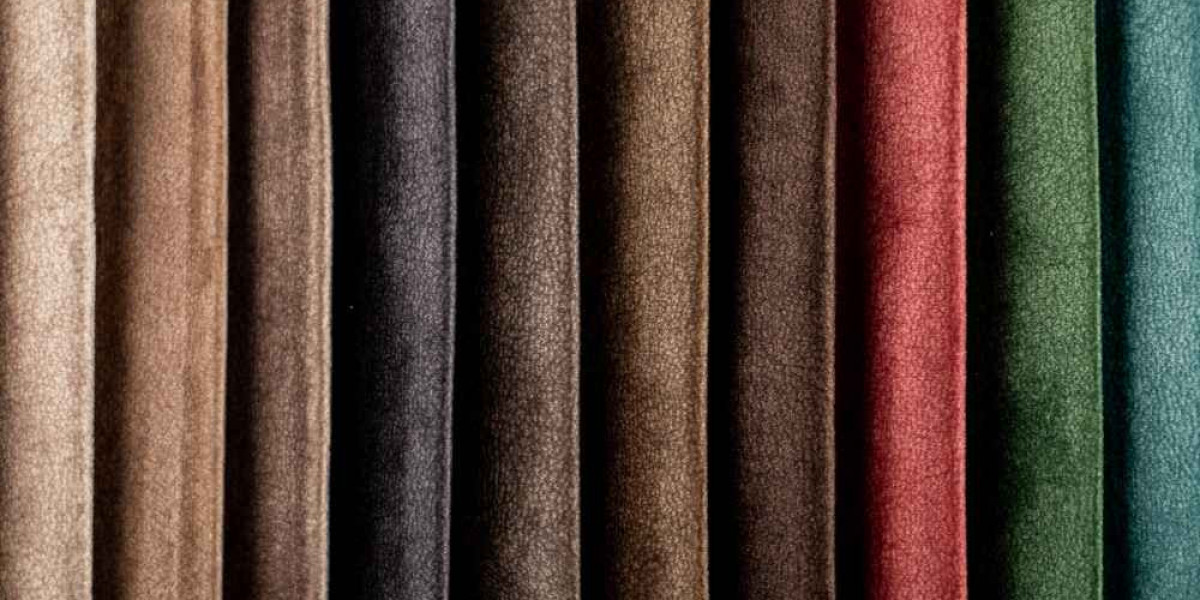Upholstery brings comfort and style to our homes, but it also bears the brunt of daily life. From coffee spills to pet hair and mysterious stains that appear out of nowhere, our furniture faces constant challenges. With proper cleaning techniques, however, you can maintain the beauty of your upholstered pieces for years to come. This comprehensive guide will walk you through everything you need to know about keeping your upholstery looking fresh and new.
Understanding Your Upholstery Fabric
Before you start cleaning, you need to identify what type of fabric covers your furniture. Most Upholstery Fabric pieces come with a care tag that uses letter codes to indicate proper cleaning methods:
W: Water-based cleaners only
S: Solvent-based cleaners only (dry cleaning)
WS or SW: Either water-based or solvent cleaners
X: Vacuum only, no water or solvents
If you can't find a tag, try to determine if your fabric is natural (cotton, linen, wool) or synthetic (polyester, nylon, acrylic). Natural fibers are generally more delicate and may require special care, while synthetic fabrics tend to be more stain-resistant but can be damaged by harsh chemicals.
When in doubt, test any cleaning solution on a hidden area of the furniture before applying it to visible sections.
Essential Supplies for Upholstery Cleaning
Gathering the right tools before you start will make the cleaning process much easier. Here's what you'll need:
Vacuum with upholstery attachment
Microfiber cloths (white or light-colored to avoid color transfer)
Soft-bristled brush
Spray bottles
Distilled water
Mild dish soap
White vinegar
Baking soda
Hydrogen peroxide (for certain stains)
Commercial upholstery cleaner appropriate for your fabric type
Fabric protector spray
Steam cleaner (optional, for deep cleaning)
These basic supplies will handle most upholstery cleaning tasks. Store them together in a caddy so they're ready whenever you need them.
Regular Maintenance: The Foundation of Clean Upholstery
Prevention is always better than cure when it comes to upholstery care. Establishing a regular maintenance routine will minimize the need for deep cleaning and extend the life of your furniture.
Vacuum your upholstery weekly to remove dust, crumbs, and pet hair before they settle into the fabric. Use the upholstery attachment and work in slow, overlapping strokes. Don't forget the crevices, where dirt tends to accumulate. For delicate fabrics, reduce the suction power to avoid damaging the material.
Rotate and fluff cushions regularly to promote even wear. This simple step prevents permanent indentations and helps maintain the furniture's shape.
Consider using washable throws or slipcovers in high-traffic areas or homes with children and pets. These protective layers can be easily removed and cleaned, saving your upholstery from unnecessary wear and stains.
Tackling Common Stains: Act Fast, Clean Smart
The golden rule for stain removal is to act quickly. The longer a stain sits, the harder it becomes to remove. Here's how to handle common upholstery stains:
For water-based stains (coffee, tea, wine, juice):
Blot immediately with clean, white cloths to absorb excess liquid
Mix a solution of mild dish soap with warm water
Dampen a clean cloth with the solution and gently blot the stain
Rinse by blotting with a cloth dampened with clean water
Allow to air dry completely
For oil-based stains (grease, makeup, crayon):
Sprinkle baking soda or cornstarch on the stain to absorb excess oil
Let it sit for 15-20 minutes, then vacuum
For stubborn residue, apply a small amount of dry cleaning solvent to a cloth and blot (for S-coded fabrics)
For W-coded fabrics, try a solution of dish soap and warm water instead
For protein-based stains (blood, sweat, food):
Mix cold water with a small amount of enzyme cleaner
Apply with a clean cloth, working from the outside of the stain inward
Blot, don't rub, to prevent spreading the stain
Rinse with clean water and blot dry
Remember to work gently and avoid over-wetting the fabric, which can lead to water marks or mildew.
Deep Cleaning Methods for Different Fabric Types
Even with regular maintenance, upholstery will eventually need a more thorough cleaning. The appropriate method depends on your fabric type:
For W-coded fabrics (water-safe):
Vacuum thoroughly to remove loose dirt
Mix 1/4 cup mild dish soap with 1 cup warm water until foamy
Apply foam only (not liquid) to the fabric with a soft brush
Work in small sections, using circular motions
Wipe away soap with a damp cloth
Allow to dry completely before using
For S-coded fabrics (solvent-only):
Purchase a commercial dry-cleaning solvent
Apply according to package directions using a clean white cloth
Work in a well-ventilated area
Avoid oversaturating the fabric
For WS-coded fabrics, you can choose either method based on the specific stain you're treating.
For natural fiber upholstery like linen or cotton, steam cleaning can be effective. The heat and moisture loosen dirt without harsh chemicals. Rent a steam cleaner with upholstery attachments or hire a professional for best results.
DIY Upholstery Cleaners: Effective and Eco-Friendly Solutions
Commercial cleaners work well, but you can also make effective upholstery cleaners with ingredients you probably already have at home:
Basic All-Purpose Cleaner:
1/4 cup white vinegar
3/4 cup warm water
1 tablespoon dish soap
Mix in a spray bottle and shake well
Deodorizing Cleaner:
1/2 cup baking soda
10-15 drops essential oil (lavender or tea tree work well)
Mix and sprinkle on upholstery, let sit for 20 minutes, then vacuum
Tough Stain Remover (for W-coded fabrics only):
1/4 cup hydrogen peroxide
1 tablespoon dish soap
Mix and apply with a clean cloth, then rinse
Always test homemade cleaners on an inconspicuous area first, and avoid using vinegar on natural fibers like silk or wool, as it can damage them.
Specialized Cleaning for Different Upholstery Materials
Different materials require specific approaches to cleaning:
Leather upholstery needs regular dusting and occasional conditioning. Use a leather cleaner followed by a leather conditioner to prevent cracking and maintain suppleness.
Microfiber, despite being durable, can develop water spots easily. For water-safe microfiber, use a small amount of dish soap foam and a microfiber cloth. For solvent-clean only microfiber, rubbing alcohol applied with a white sponge works well to remove stains.
Velvet requires gentle handling. Vacuum regularly with a brush attachment and treat stains by blotting carefully. Never rub velvet, as it can damage the pile.
Wool upholstery benefits from regular vacuuming and prompt stain treatment. Use wool-safe cleaners that maintain the fabric's natural oils.
Outdoor upholstery faces additional challenges from sun, rain, and mildew. Clean with a solution of dish soap and warm water, rinse thoroughly, and make sure it dries completely before using again.
Professional Cleaning: When to Call the Experts
While DIY cleaning works for regular maintenance, professional cleaning has its place in upholstery care. Consider hiring professionals:
Once every 12-24 months for preventive maintenance
When dealing with set-in stains that haven't responded to home treatments
After recovering from flooding or water damage
When cleaning valuable antique furniture
If your upholstery has complex details or delicate materials
Professional cleaners have specialized equipment and solutions that provide deeper cleaning without damaging the fabric. They can also apply professional-grade stain protectors that extend the life of your upholstery.
When selecting a professional service, look for companies with specific experience in upholstery cleaning, positive reviews, and proper certification from organizations like the Institute of Inspection, Cleaning and Restoration Certification (IICRC).
Protecting Your Clean Upholstery: Prevention Strategies
After cleaning your upholstery, take steps to keep it looking fresh longer:
Apply fabric protector spray designed for your upholstery type. These products create an invisible barrier that repels liquids and makes stain removal easier. Reapply after each deep cleaning.
Establish household rules about eating and drinking on upholstered furniture. Consider designating certain pieces as food-free zones, especially for items with delicate fabrics.
Use arm covers and headrest protectors on areas that receive the most contact. These can be decorative while still providing practical protection against oils from hair and skin.
Position upholstered furniture away from direct sunlight, which can fade fabrics over time. If that's not possible, use window treatments that filter UV rays or consider furniture covers when the room gets the most sun exposure.
For homes with pets, keep lint rollers handy for quick fur removal, and consider throwing a washable blanket over your pet's favorite spot to minimize direct contact with the upholstery.
Conclusion
Maintaining clean upholstery doesn't require professional skills—just consistent attention and the right techniques. By understanding your fabric type, establishing regular cleaning routines, promptly addressing spills, and occasionally deep cleaning, you can keep your furniture looking fresh and inviting for years.
Remember that different fabrics have different needs, so always check care labels before attempting any cleaning method. When in doubt, test in an inconspicuous area first or consult a professional.
Clean upholstery contributes significantly to the overall appearance and healthiness of your home. Beyond aesthetics, regular cleaning removes allergens and extends the life of your furniture, protecting your investment. With the strategies outlined in this guide, you'll be well-equipped to handle everything from routine maintenance to challenging stains, ensuring your upholstered pieces remain beautiful and comfortable through years of use.
Frequently Asked Questions
How often should I clean my upholstered furniture?
You should vacuum your upholstery weekly to remove surface dust and debris. Spot-clean stains as they occur, and perform a deeper cleaning every 6-12 months depending on use. Homes with children, pets, or smokers may require more frequent cleaning.
Can I use a steam cleaner on all types of upholstery?
No, steam cleaning is not suitable for all fabrics. It works well for many W-coded fabrics but can damage S-coded fabrics, silk, velvet, and leather. Always check the care tag and test in an inconspicuous area first. When in doubt, consult a professional cleaner.
Why does my upholstery smell musty after cleaning?
Musty odors typically develop when upholstery remains damp for too long after cleaning. To prevent this, use minimal moisture when cleaning, ensure good ventilation, and use fans to speed drying time. If musty odors persist, you may need to treat for mildew with a fabric-safe disinfectant.
How can I remove pet odors from my couch?
Start by vacuuming thoroughly to remove hair and dander. Then sprinkle baking soda liberally over the upholstery and let it sit overnight to absorb odors. Vacuum again, then treat any remaining odors with an enzyme-based pet odor eliminator designed for upholstery. For persistent problems, consider professional cleaning with specialized deodorizing treatments.
Is it possible to clean upholstery labeled "X" (vacuum only)?
Yes, but options are limited. For X-coded fabrics, regular vacuuming is your primary cleaning method. For spots or stains, consult a professional cleaner with experience handling delicate fabrics. Some specialized dry-cleaning solvents might be suitable, but always test first and use with extreme caution. These fabrics typically require professional attention for anything beyond basic maintenance.








